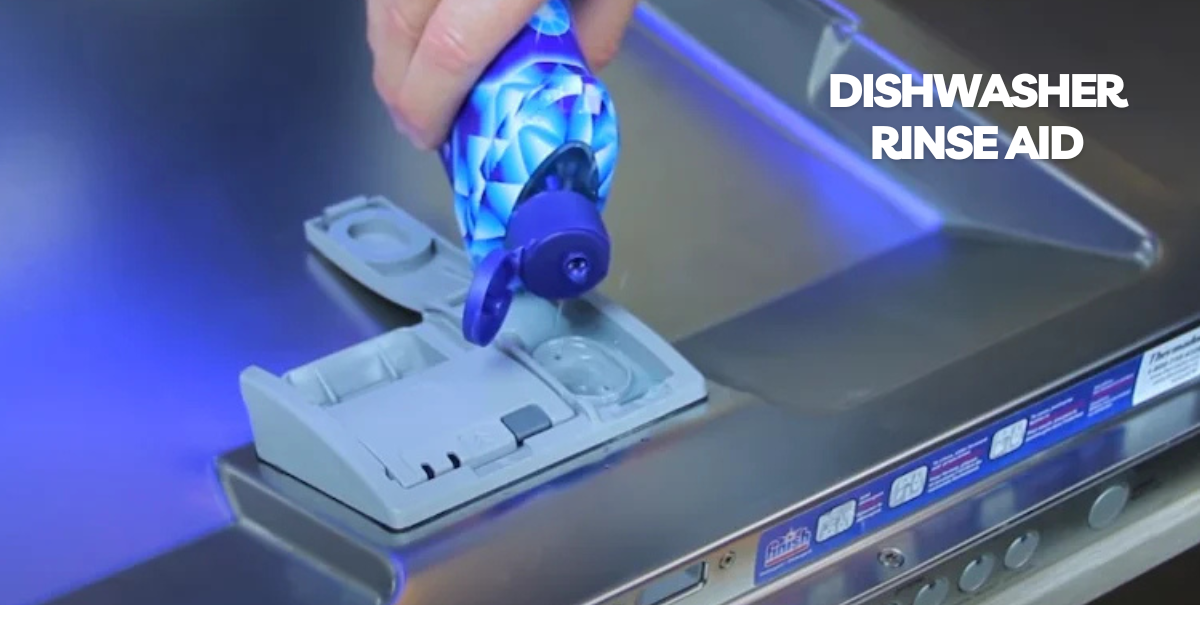Using dishwasher salt and rinse aid is key. They help keep your dishwasher clean and stop limescale from building up. These two parts help your dishwasher work well. They soften water and improve drying.
Below, we’ll walk you through their usage, benefits, and key FAQs to keep your dishes spotless.
What Is Dishwasher Salt?
Dishwasher salt is a special type of sodium chloride. It helps dishwashers soften hard water and stops limescale from building up. It keeps dishes clean by making detergent work better and shielding parts from mineral build-up.
Dishwasher salt is different from table salt. It has coarse grains and no anti-caking agents. This makes it safe for water softener systems.
What Is Dishwasher Salt Made Of?
Dishwasher salt is 100% pure sodium chloride (NaCl) made just for dishwashers. It doesn’t have anti-caking agents, iodine, or other additives often seen in table salt. Impurities can clog the water softening unit. This can damage the ion exchange system and lower cleaning efficiency.
What Does Dishwasher Salt Do?
Dishwasher salt makes water softer. It does this by adding sodium ions to the dishwasher’s water softener. This process removes calcium and magnesium ions. These ions create hard water stains and limescale buildup.
Dishwasher salt keeps a steady supply of soft water. This helps detergent dissolve better, prevents cloudy dishes, and extends the dishwasher’s life.
Where to Buy Dishwasher Salt?
- Supermarkets and grocery stores: Big retail chains keep dishwasher salt in the cleaning supplies aisle. You can find it next to dishwasher detergents and rinse aids.
- Online Marketplaces: Websites like Amazon, Walmart, and eBay sell many brands of dishwasher salt. You can also buy them in bulk.
- Appliance Stores: Brands such as Bosch, Whirlpool, and Miele sell dishwasher salt designed for their models.
9 Best Dishwasher Salt 2025: Top Picks for Hard Water & Amazon
Where to Put Dishwasher Salt?
- Find the Salt Reservoir: The dishwasher salt reservoir is at the bottom near the drain.
- Unscrew the Cap: Turn the cap counterclockwise to open the dishwasher salt reservoir.
- Add Water (First-Time Use Only): Fill the reservoir with water before adding salt. This activates the water softener. This step is only needed the first time.
- Pour in Dishwasher Salt: Use a funnel to pour dishwasher salt into the compartment until full. Some overflow of water is normal.
- Tighten the Cap Well: Close the reservoir securely. This stops leaks and helps the water softener work properly.
How Much Salt to Put in a Dishwasher for the First Time?
Dishwasher salt reservoir should be filled to the top during the initial use. The typical capacity is 4.5 cups (1 kg), but this may vary by model. Filling it keeps the built-in water softener working well. This stops hard water spots and limescale build-up.
Dishwasher Salt Reservoir Full of Water?
- It’s completely normal for the dishwasher salt reservoir to have water inside. This water dissolves the salt gradually, aiding the water softening process.
- Do not drain it before refilling. Simply add more dishwasher salt as needed to keep the water softening unit active.
- If the reservoir is overflowing, check for a loose cap or a clogged filter. These problems can lead to poor drainage.
Do I Need Salt in My Dishwasher If I Use Tablets?
- Yes, if you have hard water. Dishwasher tablets have salt functions, but they do not fully soften water in very hard water areas.
- Using dishwasher salt boosts performance. It helps the appliance last longer, cuts down limescale, and improves detergent efficiency.
- Not using dishwasher salt can lead to cloudy glasses and mineral build-up. It can also reduce the dishwasher’s efficiency over time.
Do You Use Dishwasher Salt with Every Wash?
No, you don’t need to add dishwasher salt with every wash. Refill the salt compartment only when it’s empty. This usually happens about once a month, but it can vary based on water hardness. Check the dishwasher salt indicator light to know when to refill.
- Refill only when needed, usually every few weeks.
- Hard water areas must more frequent top-ups.
- Check the salt level to maintain optimal cleaning performance.
Do I Need Dishwasher Salt with Finish Quantum?
- Finish Quantum tablets have a water softener. But in places with very hard water, they might not be enough.
- If your dishwasher has a salt reservoir, add dishwasher salt. This helps to soften the water and stops limescale from building up.
- Using Finish Quantum with dishwasher salt improves cleaning. This combo cuts down on white spots on dishes.
What Happens If You Don’t Put Salt in Your Dishwasher?
- Limescale can build up in the dishwasher’s heating element and spray arms. This reduces how well it cleans.
- Hard water stains can make glassware, cutlery, and dishes look cloudy and dull.
- Detergent may not dissolve well. This can cause poor cleaning and must require many wash cycles.
Final Thoughts
Dishwasher salt is key. It stops limescale, keeps dishes spotless, and helps your dishwasher last longer. Using dishwasher tablets is good, but adding dishwasher salt in hard water areas makes it even better. Regular maintenance helps your dishwasher work well. Check the salt level and refill it when needed.
Where to Put Rinse Aid in a Dishwasher?

The rinse aid compartment is inside the dishwasher door, next to the detergent dispenser. Open the cover, pour in rinse aid until it reaches the full line, then close the lid.
- Find the rinse aid dispenser inside the door panel.
- Pour rinse aid carefully to avoid overfilling.
- Close the lid securely and wipe away any spills.
For a step-by-step guide, check out How to Use Rinse Aid? (5 Easy Steps).
What Does Rinse Aid Do?
Rinse aid helps dishes dry faster, prevents water spots, and enhances shine. It lowers water’s surface tension, so it slides off dishes rather than forming droplets.
- Speeds up drying by reducing water residue.
- Prevents water spots and streaks on glasses and dishes.
- Improves overall cleanliness by aiding detergent efficiency.
Do I Need Rinse Aid if I Use Dishwasher Tablets?
Yes, rinse aid is still beneficial even when using dishwasher tablets. Tablets have some rinse aid, but using a separate rinse aid gives better drying and a streak-free finish.
- Dishwasher tablets may not provide enough rinse aid for optimal drying.
- Adding rinse aid separately prevents water spots on glassware.
- Improves dish drying performance in all wash cycles.
How Often to Refill Rinse Aid?
Refill rinse aid when the indicator light turns on, or at least every 20–30 washes. If dishes have water spots or take longer to dry, it may be time to top up.
- Check the rinse aid indicator light to know when to refill.
- Refill every few weeks, depending on dishwasher usage.
- Adjust rinse aid settings if spotting or streaking occurs.
Tips for Optimal Dishwasher Performance
Regularly maintaining your dishwasher and using salt and rinse aid properly keeps it cleaning at its best. Keeping your dishwasher in great shape stops buildup, makes it last longer, and boosts drying performance.
- Clean the dishwasher filter on a regular basis to prevent clogs and maintain efficiency.
- Use the right amount of dishwasher salt and rinse aid for the best results.
- Run a hot cycle with vinegar monthly to remove grease and odours.
Final Thoughts
Using dishwasher salt and rinse aid properly makes your dishwasher work better. It stops limescale and helps with drying. Top up the dishwasher salt each month. Check the rinse aid dispenser regularly. Also, follow maintenance tips to keep your dishwasher running well.







